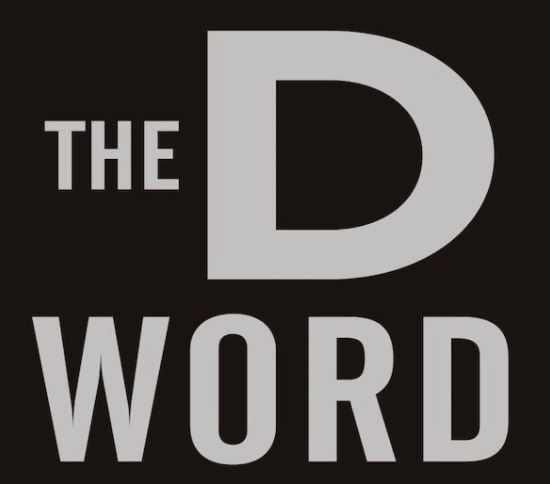Your Stories: Cognitive Behavioural Therapy and Depression
By Shubhrata Prakash
My first experience of Cognitive Behavioural Therapy (CBT) was a brief but promising one. When I was first diagnosed with Major Depressive Disorder (MDD), in 2011, I was put on anti-depressants and my psychiatrist did some counselling for me. However, that left many gaps in my treatment. The anti-depressants were maybe working, maybe not working — I cannot be sure. The MDD had turned my mind into a battlefield of emotions. And I was getting battered in that battlefield. By a stroke of luck, I was able to find a psychotherapist who taught me the basics of CBT.
He taught me how to recognise the Negative Automatic Thoughts (NATs) that my mind kept churning out. He also taught me how to analyse the emotions that such thoughts brought with them, and how to identify the distinct components of any such emotion – fear, anger, sadness. And to round up and rationalise the NAT, he told me to ask this question – what would I say to a friend – and taught me how to answer it.
I never realised, at that time, that he was teaching me a life-saving skill, which I would come to use frequently, and which would become as automatic to me as the negative thoughts (NATs) themselves. We only had a couple of sessions, where he would go over the diary of NATs that he had asked me to maintain. After a week of CBT, I was better, and I had to move to another city. I tried to keep up the mood diary, but slowly, I became irregular. Having no one to discuss my NATs, and their resolution with, I was not motivated enough to keep putting in the effort. Then, very soon, life became chaotic with a million things demanding my attention, and so, the CBT was forgotten.
Distorted thoughts can only be corrected in a two-step process:
1) Being wise to the distortion
2) Replacing the Negative Automatic Thoughts with rational thoughts.
This is where CBT comes in, and plays a very important role in managing one’s thoughts, till Major Depressive Disorder goes into remission.

THE JOURNEY
When I had another depressive episode a year later, and this one was a pure visit to hell, which lasted for over 4 long years, CBT was something I looked for, but I did not have access to a therapist trained in CBT for the first one-and-a-half years of it. The next two years of CBT did help a lot. It was the same routine with CBT as before. I used to maintain a mood diary, in which I would write down the NATs, analyse the emotions they evoked into fear, anger and sadness components, and then advise an imaginary friend about dealing with the situation.
To say that I was regular with the diary would be stretching the truth a bit. I tried, but sometimes the effort required in keeping a mood diary was too much for my depressed, drug-addled mind. Lots of times, there were issues where I would get stuck in the rationalisation process. That is where the skill of the therapist matters. Thankfully, I had a skilled therapist, and she would help me at all such places when I got stuck. The therapist’s advice helped me navigate the memories of some treacherous past traumas safely. Some of her advice became life’s beacons for me – I always use them as guiding lights when other things happen which have a similar bearing on my life. Over a period of time, and with practice, I came to internalise the entire process of CBT. I no longer have to write down NATs or maintain a mood diary.
I have built up the capacity to recognise NATs as soon as they arise in my mind, and then I analyse them –- what am I feeling, why am I feeling it –- and, finally, I am able to replace every NAT with a rational thought. It works well, and helps me keep my thoughts, and thus my mood, from going down a spiral path.
CBT is, thus, one of the most useful tools a person can use to fight MDD.

MDD is characterised by the distortion of one’s cognitive processes. The changes that occur in the brain and its neural pathways, make the occurrence of NATs an integral part of the sufferer’s thought process. The negative thoughts tend to just go on and on. A sufferer just goes on ruminating, thinking long-winded thoughts, mostly negative, with a sense of gloom and doom. It seems like just about everything and everybody in the world is out to hurt them on purpose. All the past hurts and failures play out in high-definition, and the future always looks bleak. This process goes on as long as MDD is present, and the NATs mostly go away only when MDD goes into remission. Once MDD goes away, the sufferer’s thoughts and cognitive processes return to normal. It is only then that the rumination stops. So, one very important part of managing MDD is managing the negative thoughts and the rumination that comes with it, and that can only be done by rationalising the distorted thoughts.
Counselling therapy is useful in MDD, but counselling alone is insufficient. During counselling, the sufferer is able to talk about what issues are bothering them, and about how miserable they feel. They may be able to acknowledge their runaway thoughts, but they have no means of recognising, analysing or replacing their NATs.
Till date, there is no cure for MDD.
The anti-depressants are just a part of the management of MDD and help the sufferers manage their depressive symptoms till the MDD goes into remission. In about 40% of the sufferers, anti-depressants just do not work. Even if anti-depressants manage to get some relief for sufferers, several studies have shown that a combination of psychotherapy and drugs is more effective than drugs alone in managing depression. That may be so because anti-depressants do not help in managing one’s cognitive processes, or correcting distorted thoughts. Distorted thoughts can only be corrected in a two-step process: one, being wise to the distortion; second, replacing the NATs with rational thoughts. This is where CBT comes in, and plays a very important role in managing one’s thoughts, till MDD goes into remission.
CBT comes with its own sets of challenges and limitations.
Its success depends on a lot of factors, the primary ones being the capacity of the sufferer of being able to use it effectively, and the skill of the therapist imparting it.
The person seeking CBT should still be capable of generating rational thoughts, and that depends on how far gone they are. A person with catatonic depression, who cannot even move, would not be able to use CBT. A person whose rational thought processes are not very developed, even pre-MDD, may have only limited success with CBT. CBT also involves articulation of one’s thoughts, and that again depends on the ability of the sufferer in that regard.
The therapist should be empathetic and inspiring. They should know when to push, when the sufferer is non-compliant with diary maintenance, and how much to push. The therapist should have the ability to fill in gaps in the sufferer’s rationalising process, and help the sufferer over the road blocks they may hit when it comes to advising “a friend”. In fact, a skilled therapist can help supplement the inadequate thinking, articulation and rationalisation skills of the sufferer, and still have a positive outcome from CBT. Much of the success of CBT depends on how motivated the sufferer is.
Diary maintenance is a tough job, and if the sufferer does not regularly update his/her diary, various NATs do not get recorded and thus, do not get addressed. It is possible, as I often found in my case, that the rigours of diary maintenance become an additional source of stress for the sufferer.
CBT itself hits a road block when it comes to certain areas. For e.g., there is very little CBT can do when the MDD sufferer has trauma, and the thoughts related to the trauma are very realistic and not irrational, even with a highly-skilled therapist.
Even with all its limitations, CBT is a very useful therapeutic tool in fighting MDD. I have personally found it extremely effective. It even helps in preventing relapse, once remission is achieved. A person who has experienced the benefits of CBT, and has enough practice in it, can keep another depressive episode at bay, by recognising the familiar pattern of distortion of thoughts, as soon as it starts developing. CBT helps in managing the deluge of negative thoughts during a depressive episode, and in effect, in managing MDD itself. CBT even helps in rationalising suicidal ideation.
The biggest problem with CBT, in India, is a humongous shortage of skilled CBT professionals. At best, one may find a handful of CBT-trained therapists in metro cities. In smaller towns, what to say of villages, finding any kind of psychotherapist is difficult, let alone a CBT specialist. What one can wish for, though, is that more and more people take up psychotherapy and CBT as a profession – it will greatly benefit a large section of the population that suffers from MDD but has little help in fighting it.
Shubhrata Prakash is an IRS officer, and author of ‘The D Word: A Survivor’s Guide to Depression’ (Pan Macmillan India, 2016)
You will findher interview here and here in Hindi.




Pingback: Your Stories: How to Navigate Relationships and Love With Depression
Pingback: Life Beyond Trauma: A Therapy Guide